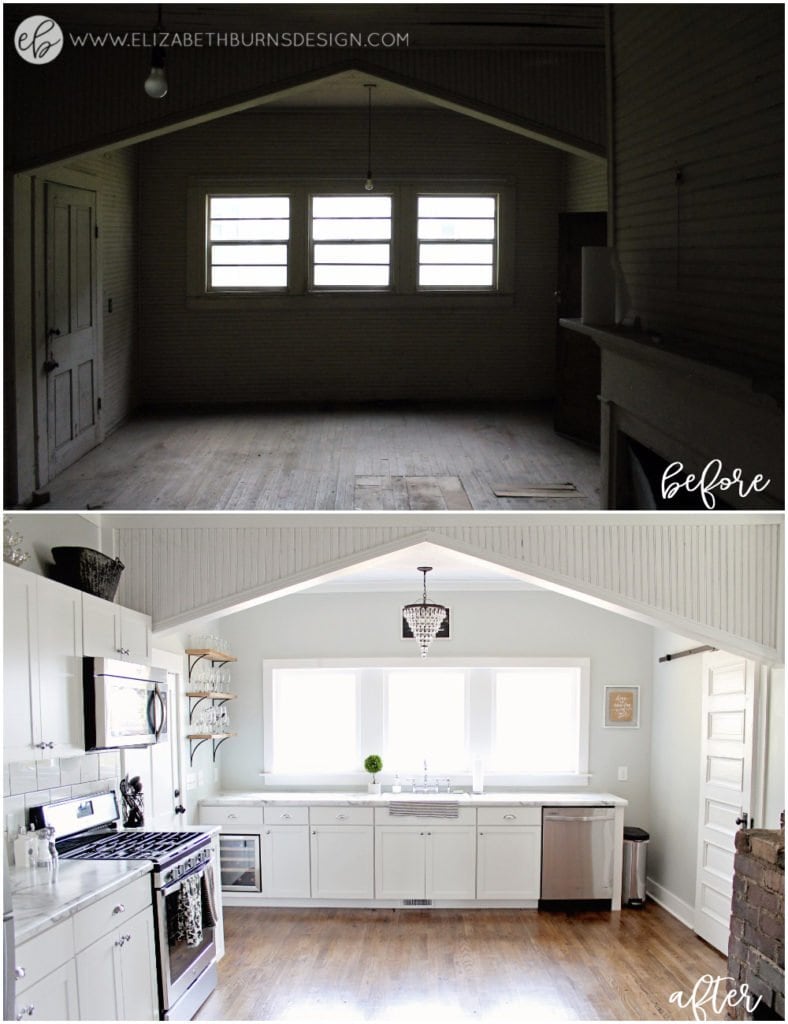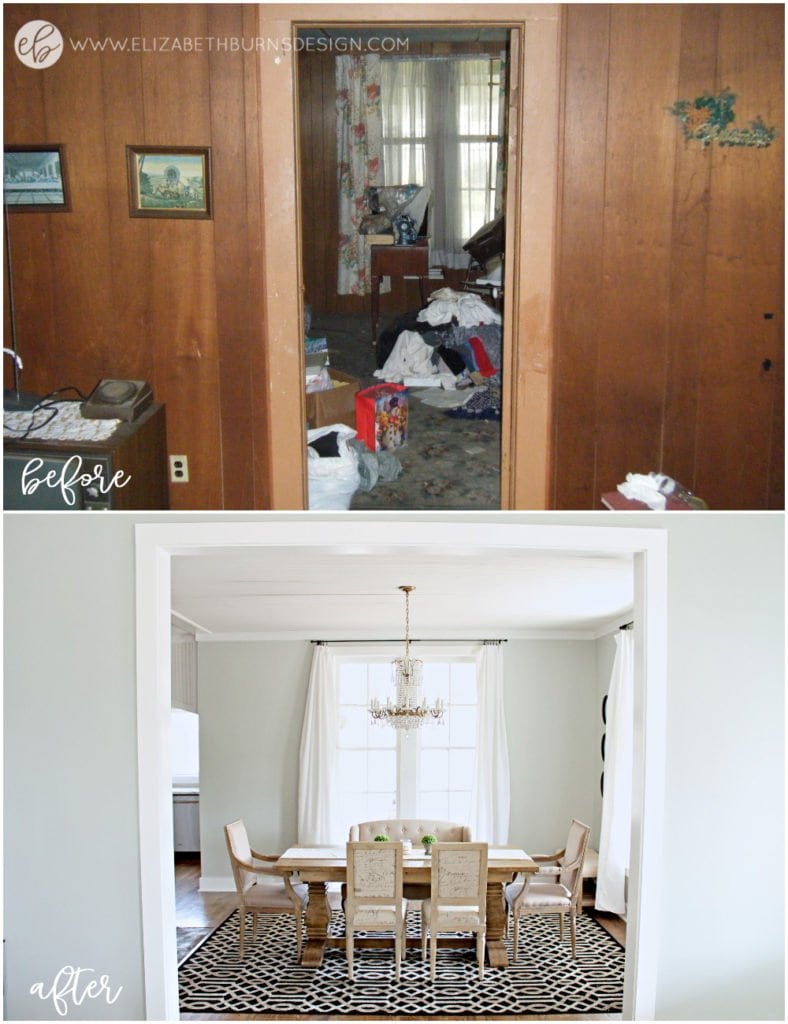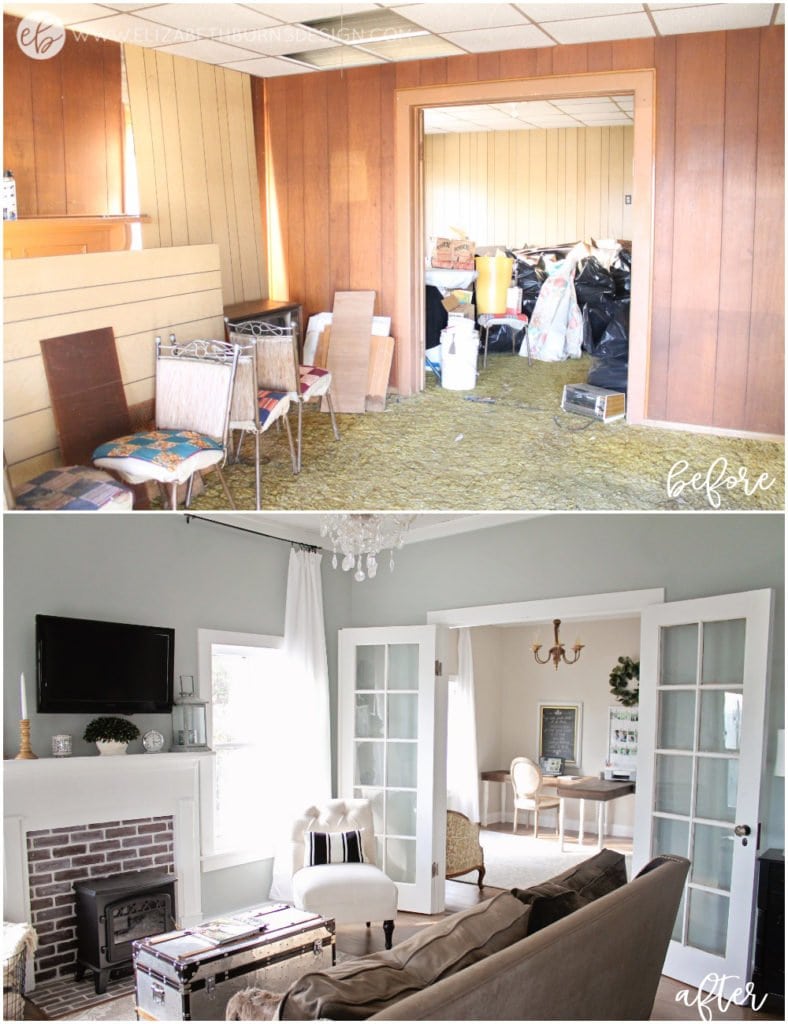Michelle’s quick note: Today, I have a great blog post from Elizabeth about renovating a fixer upper. She writes about designing a beautiful life on a budget, and today she is going to talk about the ways she saved money when renovating a fixer upper – an abandoned 115 year old house. Her before and…
Michelle’s quick note: Today, I have a great blog post from Elizabeth about renovating a fixer upper. She writes about designing a beautiful life on a budget, and today she is going to talk about the ways she saved money when renovating a fixer upper – an abandoned 115 year old house. Her before and after pictures are amazing. Enjoy!
 HGTV darlings, Chip and Joanna Gaines, have captured the hearts of millions of viewers and serendipitously inspired people across the country to go out and purchase a “Fixer Upper” of their very own.
HGTV darlings, Chip and Joanna Gaines, have captured the hearts of millions of viewers and serendipitously inspired people across the country to go out and purchase a “Fixer Upper” of their very own.
Related readings that will help you when renovating a fixer upper:
My husband and I fell into this camp when we inherited his late Grandmother’s 1901 cottage. With my background in interior design and my husband’s affinity for carpentry & construction, we were smitten with the romantic idea of fixing up an old family house.
We dove head first into the renovation with rose-colored glasses and an unrealistic budget.
In the end, our misguided renovation estimate QUADROUPLED over the course of the three-year project. We had inherited what you would call a “money pit“. 🙂 (If you guys haven’t seen the movie, The Money Pit, it is so good.) This forced us to get really creative when it came time to finding affordable finishes.
Not to fear! Not all fixer uppers need quite as much work or money like ours did to make a diamond in the rough shine.
Real estate investing can be a lucrative – albeit risky – income source. It has allowed my husband and I to be completely debt free.
We purchased our first home in 2011 for $183,000, made minor cosmetic improvements, rented it out for a few years, and then sold it in 2016 for $285,000.
The housing market in our neighborhood exploded in those five years and we were able to use that equity to pay off all of our loans. Purchasing a bargain-priced, outdated home and renovating it yourself (even over time) can be a really great way to make money when you sell it if you make smart choices and utilize sweat equity.
I am not a real estate or renovation expert by any means, but I hope others can learn from our experience renovating properties and use it to their advantage on their journey to financial freedom.
Whether you are looking to spruce up your home for you and your family on a budget or thinking about investing in a property to renovate and flip, here are a few tips and pieces of advice we have picked up over the years:

Hire a reputable contractor when renovating a fixer upper
If your new home requires considerable amounts of work and you need to enlist the help of a professional contractor (or sub-contractors), make sure he or she is licensed, insured, and reputable.
Get quotes from multiple contractors and ask for references. Request proof of insurance and their license number.
Look them up on Yelp, Facebook reviews, and BBB (Better Business Bureau).
The last thing you want is to fork out thousands of dollars to someone who doesn’t know what they are doing; it will cost you so much more in the end.
Create a realistic budget with buffer when renovating on a budget
Just like you would in an everyday budget, it is important to assign every dollar in your renovation budget. For our renovation, I created a budget spreadsheet that included material costs, labor/estimates, sales tax, and a buffer.
I would include a 10-20% buffer of the entire project to cover surprises like termite damage, asbestos, mold, or items you forgot to account for (nails and caulk can get real expensive, real quick).
In my budget, there were two columns: one for “estimated costs” of an item and one column for “actual costs.” After a material was purchased, I would enter the “actual cost” into the spreadsheet.
This way I had a running total of what was spent and could quickly calculate what was left and if we were on budget.

Wait for sales/clearances when renovating a fixer upper
We waited to start projects until the materials went on sale.
For example, our kitchen cabinets were scored during a 20% off sale. We also purchased all of the tile for our shower for $17 since it was a closeout product (it normally would have cost around $200). All of our interior doors were 75% off since they were a special order return. Keeping an eye out for deals and having the patience for things to go on sale can save you big bucks. Be sure to shop the back endcaps at stores as this is often where clearance product will end up.
At Lowe’s, you can find large carpet remnants, special order returns, and discontinued items at deep discounts.
Don’t forget to use Ebates and Honey for online purchases for even more money back in your pocket!
Use coupons when renovating a fixer upper
When we changed our address with USPS, they sent us a packet that was filled with coupons from major retailers in the home industry. Some of these included Wayfair, Bed Bath & Beyond, Big Lots, and Lowe’s. The Lowe’s coupon was really helpful because we used that when we bought our new appliances (saving us about $200). Ten percent may not seem like a huge discount, but when you are doing a complete kitchen remodel, it can save you hundreds of dollars.
Leverage Credit Card Points and Perks
I am not one to promote credit cards if you don’t feel like you can use them responsibly or if you already have a lot of credit card debt. However, if you are comfortable with credit cards, you can take advantage of some of the perks when renovating.
We have a business credit card that we use for all of our transactions (and pay in full every month).
Over time, we had acquired a decent amount of points and decided to cash them in for Lowe’s gift cards to pay for our cabinets – a $1400 expense we didn’t have to put a penny of our own towards! We also have a Lowe’s credit card which saves us 5% on all purchases.
Over time, that 5% really adds up. (For example, you could save $1000 on $20,000 worth of materials.)
Barter services with fixer upper homes
Say you are a web developer and need your house painted – why not offer to create a professional website for the painter in exchange for him or her to paint your house? I once gave an interior design consultation to a professional photographer in exchange for new headshots for my website.
Think about what skills you have and offer up a trade. The worst they could say is ‘no’ but ideally, you could save a decent amount of money in exchange for your time.
DIY/Sweat Equity
I am not a fan of attempting everything in a renovation yourself unless you are a licensed professional (we usually hire out for major things like electrical, plumbing, HVAC, roofing, and structural repairs), but simple cosmetic tasks are totally doable.
Things like painting, tiling, installing flooring, landscaping, trim, and cabinet/vanity installation are ways you can save a boatload of cash.
You can easily find tutorials on YouTube or DIY blogs with instructions. This is where you can really create that “sweat equity” in a property – by eliminating a lot of the labor costs, you are essentially putting money back in your pocket.
Buy used when renovating a fixer upper
We love to find deals on Craigslist or similar re-sale sites.
- We scored our vintage cast-iron sink for free.
- We saved about $300 on a vanity and faucet by finding a used set for $75 on Craigslist.
- A lot of contractors and remodelers will do “curb alerts” when they are renovating a house and don’t want to transport something to the dump themselves.
- Be sure to also check the Habitat Restore – we have found solid wood doors and beautiful antique chandeliers for a steal.
Update instead of replace when renovating on a budget
Some things can easily be salvaged and refreshed with paint, trim, and other light cosmetic fixes. If you have solid cabinets, try painting or staining to breathe new life into them.
This will cost a fraction of the cost of replacing. We added trim to our outdated cabinets to create a Shaker look instead of ripping them out and saved about $2000.
In the same mindset, instead of tearing out outdated tile, try re-glazing them. There are many ways you can refresh existing fixtures; you just have to get a little creative.
Install what you can afford
It is so easy to get into a “keeping up with the Joneses” mentality when renovating your home. Popular TV shows, Pinterest, and bloggers often feature stunning renovations with custom cabinets, marble tile, and designer lighting that may be out of your price range.
The last thing you want is to be paying for your renovation project 20 years from now! We opted for stock cabinets, vinyl flooring, utility grade hardwoods, and laminate countertops and couldn’t be happier with our selections. We got the look that we wanted without blowing our budget or going into debt to pay for it.
Be honest about your skill set
I think it is really easy to watch “Fixer Upper” and similar shows on TV, think they renovated that house in no time and it is something you could TOTALLY do (speaking from experience here).
I remember watching a specific episode where they tiled a shower and made it seem like it took a leisurely afternoon to finish. When we tiled our own shower, it took two of us five straight days of 12 hour shifts.
DIY renovating is really hard work.
If you have never picked up a hammer before and plan on doing a lot of the work yourself, really think hard about if this is something you want to get into. Once your feet are in, it can be difficult to jump back out without losing money.
Are you interested in renovating a fixer upper? Have you ever DIYed a part of your home?


